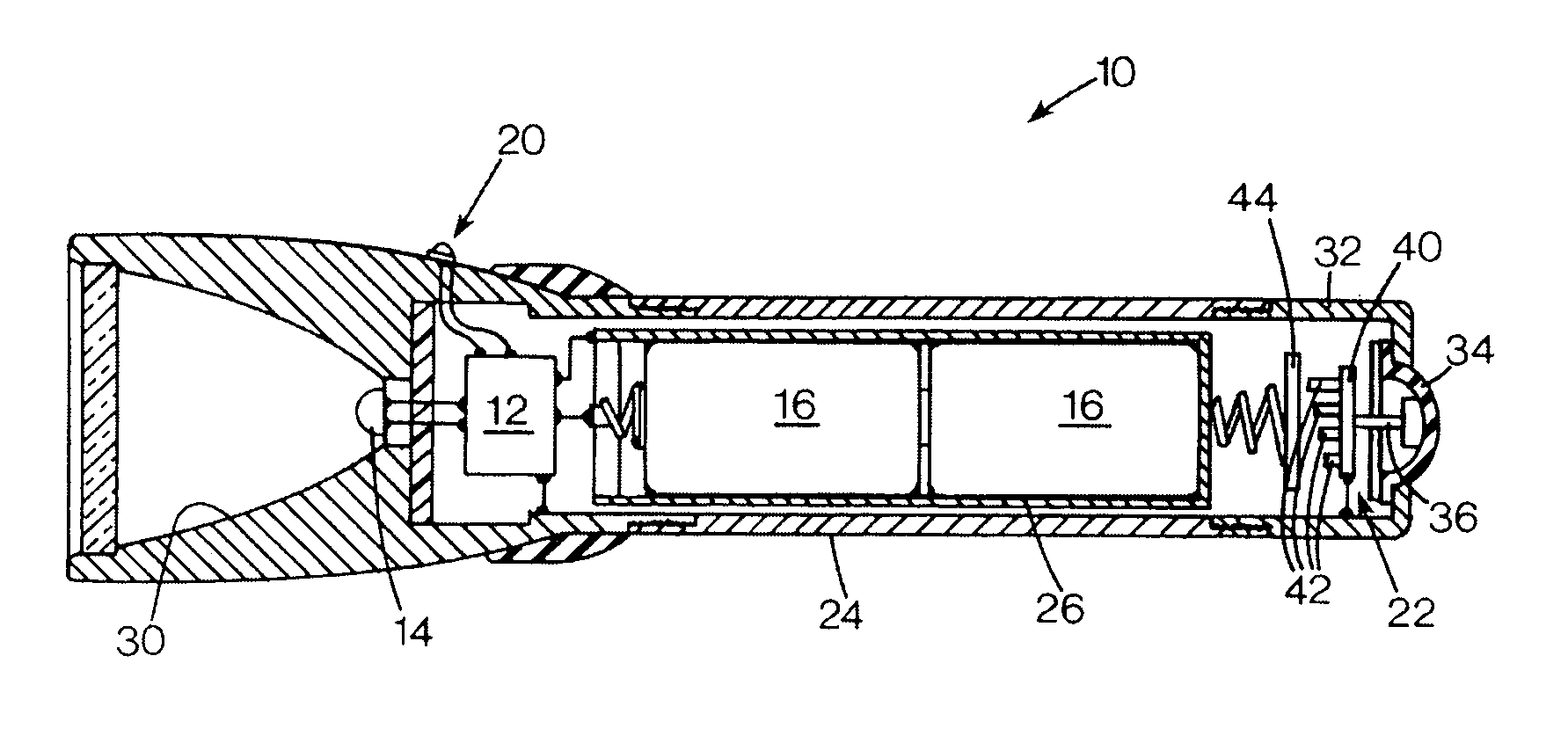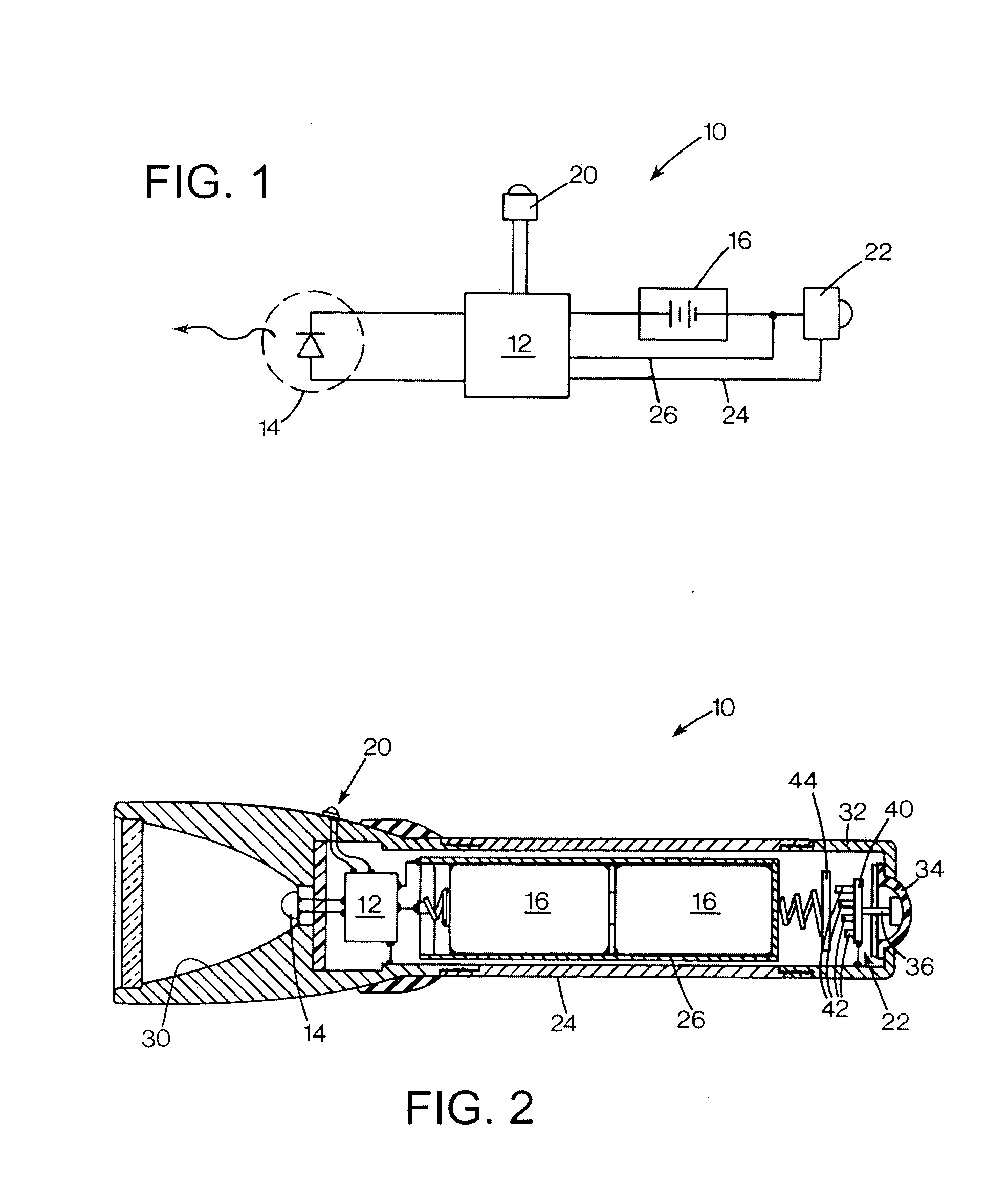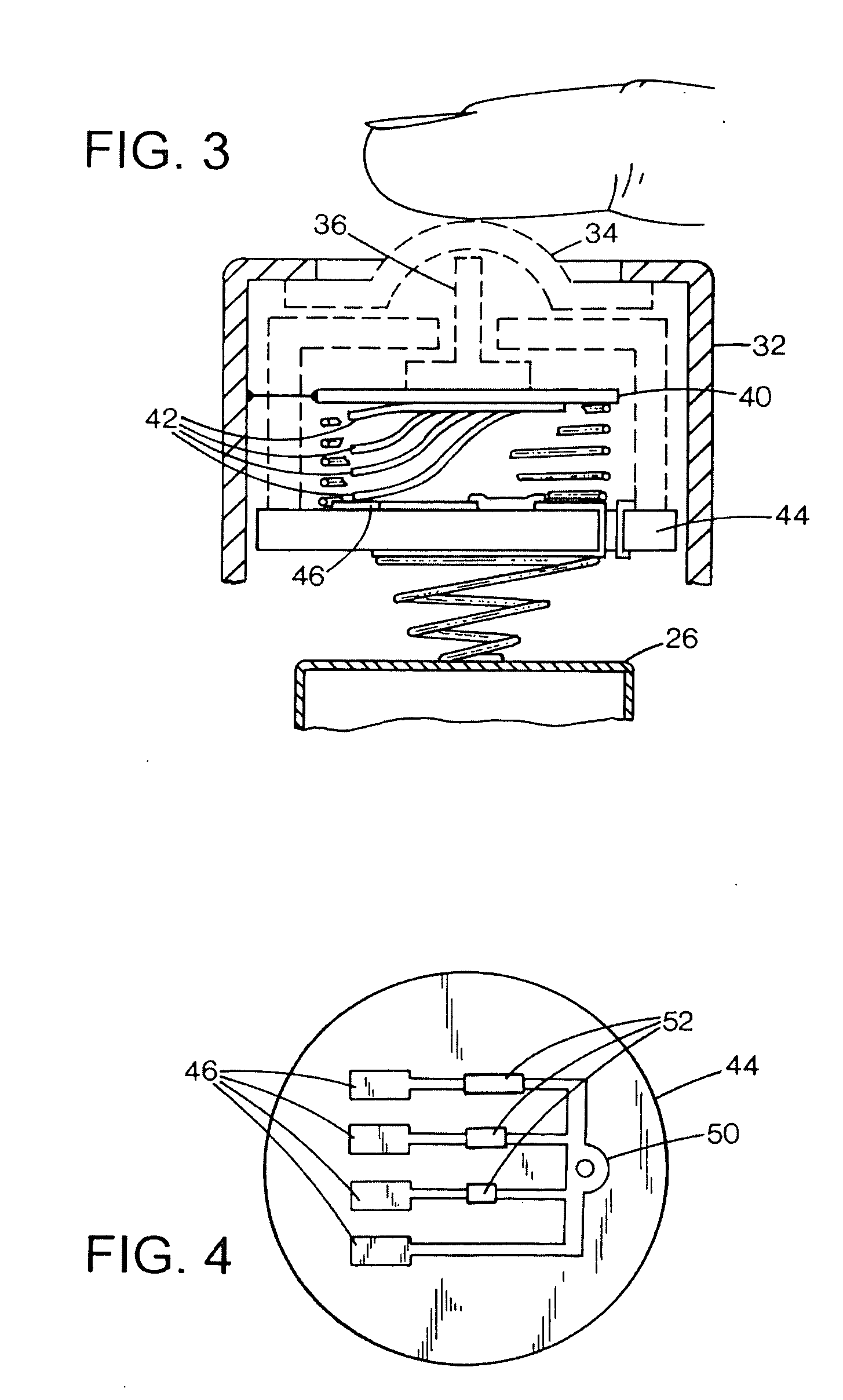Flashlight with incrementing brightness selector switch
a technology of brightness selector switch and flashlight, which is applied in the field of flashlight output switches, can solve the problems of ineffective use of tungsten filament lamps as variable output light sources, multiple limitations of dual-source lights, and excessive battery consumption
- Summary
- Abstract
- Description
- Claims
- Application Information
AI Technical Summary
Benefits of technology
Problems solved by technology
Method used
Image
Examples
Embodiment Construction
[0026]FIG. 1 shows a schematic drawing of a flashlight 10 according to a preferred embodiment of the invention. The flashlight includes a micro-processor control circuit 12 that is directly connected to a lamp 14, battery 16, dimmed level control selector 20, and operation switch 22.
[0027] The lamp 14 is preferably a light-emitting diode (LED), and may be a single lamp that operates efficiently over a wide range of input power to produce a wide range of possible light outputs. In alternative embodiments, there may be multiple light sources, either interconnected to provide a single, switchable (and dimmable) array, with all sources operating in the same manner. In other alternatives, there may be separate lamps or independently controllable lamp elements, so that color hue changes may be obtained by operating different color components in different combinations, or so that dimming control may be obtained by illuminating a different number of the components. The lamp may be an alter...
PUM
 Login to View More
Login to View More Abstract
Description
Claims
Application Information
 Login to View More
Login to View More - R&D
- Intellectual Property
- Life Sciences
- Materials
- Tech Scout
- Unparalleled Data Quality
- Higher Quality Content
- 60% Fewer Hallucinations
Browse by: Latest US Patents, China's latest patents, Technical Efficacy Thesaurus, Application Domain, Technology Topic, Popular Technical Reports.
© 2025 PatSnap. All rights reserved.Legal|Privacy policy|Modern Slavery Act Transparency Statement|Sitemap|About US| Contact US: help@patsnap.com



